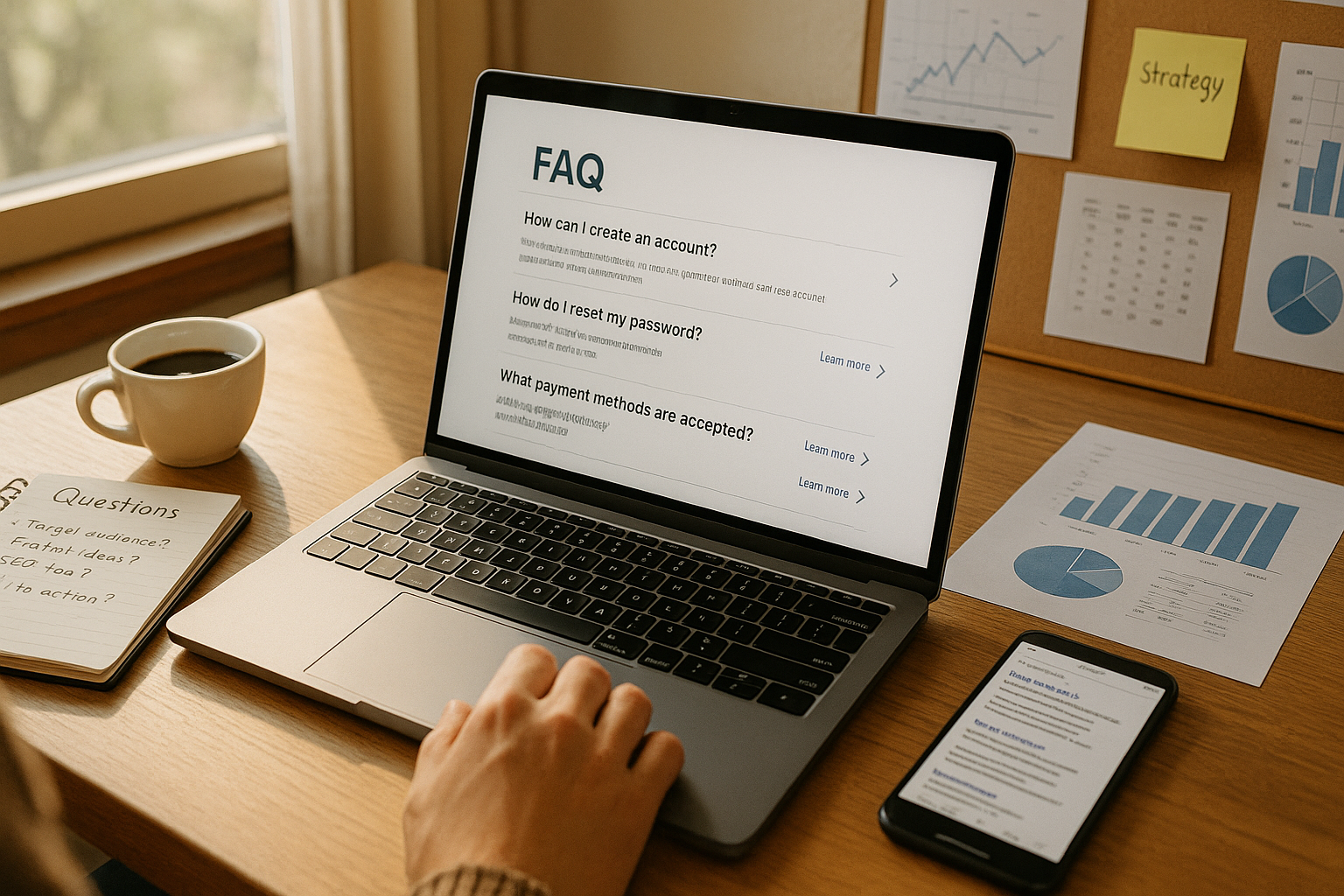Is results-based SEO worth it for startups?
Startups live and die by growth—and in today’s digital world, search engine optimization (SEO) is often central to fueling that growth. Yet SEO has a reputation for delayed results, opaque pricing, and unpredictable ROI—all pain points for resource-strapped founders. Enter “results-based SEO”: agencies offering to charge only when certain measurable milestones, like page-one rankings for specified keywords, are met. Models like GetPhound’s RankGuarantee™ and similar pay-for-performance packages are drawing startup attention—but are they genuinely good for startups, or do pitfalls lurk beneath the promises?
This article dissects the results-based SEO model from all angles, with insights for startup leaders weighing this strategy. We’ll cover what results-based SEO is, how it compares with retainer models, its benefits and drawbacks, how to vet providers, common startup missteps, and candid thoughts from the industry. You'll finish with a clear sense: is results-based SEO worth it for your startup?
What Is Results-Based SEO?
Results-based SEO (sometimes called pay-for-performance SEO) means paying your SEO agency based on clearly defined outcomes, like landing on page one of Google for certain keywords, rather than upfront or ongoing retainers. The agency’s incentives are thus closely tied to your visible search success.
Most results-based plans, such as GetPhound’s RankGuarantee™, promise:
- No recurring charges until you rank on page one for a set number of target keywords
- Fast turnaround promises—sometimes as fast as 45-60 days for measurable uplift
- Ongoing monthly fees only begin after results are independently verified
- The agency is motivated to deliver rapid, visible ranking growth to unlock their revenue
Unlike traditional SEO retainers, results-based programs claim to “de-risk” SEO for startups, letting resource-conscious founders invest more confidently in organic search growth.
How Does Results-Based SEO Work?
The mechanics of results-based SEO typically involve several phases:
- Keyword & Goal Setting: The agency works with your startup to select a large batch of target keywords (sometimes 100+), usually focusing on “low-competition” or “local” terms for quicker wins.
- Content & Landing Page Creation: Agencies often produce or optimize thousands of “landing pages,” each tailored to one or several keywords, using proprietary templates and SEO methodologies.
- Technical SEO & Indexing: They optimize technical aspects, get pages indexed, and launch the campaign. The focus is on quick visibility lifts, not broad-based brand or UX improvements.
- Performance Tracking: Rankings are continuously tracked, typically using third-party tools, to verify when you hit pre-set thresholds (such as 100+ keywords on page one).
- Payment Trigger: Only once these milestones are achieved do you start paying a fixed monthly fee. If the rankings are lost, the fee pauses or adjusts.
Some agencies require an upfront setup fee (e.g., $1,750 for GetPhound’s RankGuarantee™, payable across two months), followed by affordable monthly payments ($400/month after results kick in).
The Promised Benefits for Startups
Startups flock to results-based SEO because the model appears to align with their risk sensitivity and growth ambitions. Key advantages touted by agencies include:
- “Risk-Free” Investment: No monthly costs until real results appear, so startups feel protected from wasted spend.
- Rapid Time-to-Results: Promises of page-one visibility within weeks—not months or years.
- Aligned Incentives: The agency gets paid only for qualifying results, tightening accountability.
- Clear, Predictable Pricing: Transparent fees, not subject to hidden hourly charges or retainer inflation.
- Proven Frameworks: Proprietary methodologies and landing page systems suited for rapid keyword conquest.
This can be especially attractive to startups needing fast traction in crowded local or niche markets, or those wary of agency overpromising and underdelivering.
Hidden Costs and Caveats: What Agencies Don’t Always Say
Despite the promises, results-based SEO is not entirely risk-free, and startups should beware several pitfalls:
- Keyword Cherry-Picking: Agencies tend to target low-competition, low-intent, or very local keywords—terms often easier to rank for but not always high-value for your business.
- Shallow Engagement: The focus is often on surface-level ranking gains, not deep content, UX, or conversion optimization. Page rankings can be achieved, but visitors may not convert.
- Short-Term Tactics: Some agencies may emphasize tactics that yield quick spikes (e.g., aggressive landing page spamming), but that may not last, risking volatile results.
- Potential Black-Hat Methods: Performance incentives may encourage risky approaches (e.g., keyword stuffing, PBN links, thin content)—tactics which can endanger long-term domain health if detected.
- Limited Strategic Control: Many contracts give the agency free rein over content and link-building, which can harm brand consistency or long-term authority.
- Hidden “Result” Definitions: The definition of a “result” may be fuzzy or inflated, such as counting page-one rankings for extremely obscure terms that drive little meaningful traffic.
Thus, while payment is tied to measurable success, meaningful, sustainable results demand careful scrutiny of what’s actually being achieved.
Real-World Case Study: GetPhound’s RankGuarantee™
GetPhound’s RankGuarantee™ is a case-in-point for modern results-based SEO:
- Model: ~$1,750 startup fee (over two months), then $400/month only after 100+ keywords are confirmed on page 1
- Method: Creation of ~1,000 local landing pages for rapid, broad keyword targeting
- Timeline: Page-one rankings in 45-60 days for 100-400 local or niche terms
- Ongoing Service: Monitoring and maintenance included; pause/loss of rankings, pause in fees
Many client reviews highlight swift visibility spikes, responsive service, and a low-cost path to getting “found” online, especially for small businesses and tightly defined local niches.
But it is less clear how well these page-one rankings translate to long-term, high-value lead generation or sales, particularly in more competitive or national markets. There’s also a risk that some marked “results” may be for rarely-searched terms that don’t impact revenue.
The SEO Value Equation: Traffic vs. Rankings vs. Revenue
Startups must remember: not every page-one ranking drives business value. To truly gauge whether results-based SEO is “worth it,” consider these questions:
- Are rankings focused on keywords tied to actual buyer intent or simply low-competition, low-traffic terms?
- Is there a clear path from keywords to conversion (lead, demo, sale), or just superficial traffic boosts?
- Does the SEO provider connect reporting to your true business KPIs—sales, signups, recurring revenue—not just rankings?
Results-based SEO often emphasizes speed and volume of rankings achieved. But sustainable startup growth usually requires nurturing quality leads and guiding them toward conversion goals, not just checking boxes for as many page-one instances as possible.
How Startups Can Vet and Maximize Results-Based SEO
For startups intent on hiring a results-based SEO agency, careful vetting is essential:
- Demand Clear “Result” Definitions: Insist on outcomes linked to your business value (e.g., traffic and conversion, not just “page 1” for obscure keywords).
- Request Keyword Transparency: Ask agencies to share their list of targeted keywords and projected volumes/intent before launch.
- Scrutinize Tactics: Ensure the agency avoids black-hat methods or spammy tactics; check for a balanced, white-hat approach.
- Ensure Reporting & Communication: Confirm you’ll receive clear, honest reporting and easy channel access to your account team.
- Ask for Testimonies & Case Studies: Look for reviews, not just of ranking spikes, but real business outcomes (leads, deals, sales).
- Consider a Hybrid Arrangement: Blend pay-for-result incentives with strategic retainers, broader content marketing, or conversion optimization for more holistic growth.
These due-diligence steps ensure your “guaranteed” results deliver real, cumulative value.
Common Startup SEO Pitfalls in Results-Based Models
Startups approach results-based SEO with the right ambitions, but pitfalls abound:
- Choosing Cheapest Offerings: Some startups shop on price alone, winding up with “guarantees” that deliver minimal business value.
- Neglecting Technical and Conversion Aspects: Focusing solely on rankings can neglect key parts of SEO—site speed, UX, conversion—dampening ROI.
- Overlooking Fine Print: Agencies may count duplicate or near-identical keywords, or limit “free” results to non-commercial terms.
- Not Auditing Long-Term Traffic & Revenue: Startups must watch for slipping performance after initial wins; results-based providers may step back once incentives are met.
- Brand & Reputation Exposure: Black-hat shortcuts can abruptly destroy search visibility, and unlike results-based contracts, the brand penalties can last years.
Avoiding these traps means staying engaged and keeping an eye on the numbers beyond “keyword ranking achieved.”
Is Results-Based SEO Better for Local/Niche Startups?
Results-based SEO generally delivers its best value for startups targeting local or highly niche markets:
- Local businesses (e.g., home services, medical, hospitality) benefit from rapid page-one visibility for location-modified high-intent terms (“plumber in [city]”).
- Niche startups who can compile long-tail, low-competition keyword lists (but with clear buyer intent) may see quick and sustained lead spikes.
- Startups in ultra-competitive national or B2B spaces may find results-based SEO’s focus on “easy” keywords misaligned with broader, brand-building growth—traditional or hybrid SEO may be better here.
In sum, results-based SEO can work as a growth springboard for the right kind of startup, provided both quality and quantity of results are carefully managed.
Is Results-Based SEO Worth It for Startups?
For many startups, results-based SEO offers an appealing, lower-risk way to get found online quickly, especially in local or narrowly-defined spaces where ranking for dozens or hundreds of specific keywords can drive early traction. The “no results, no pay” model, like GetPhound’s RankGuarantee™, means precious marketing budgets aren’t wasted on months of non-delivery.
However, startups must maintain clear-eyed vigilance:
- Not all rankings are equally valuable; insist on keywords that move the business forward.
- Beware of agencies using short-term, black-hat tactics for fast results; long-term penalties can be severe.
- Monitor not just rankings, but real traffic, conversion, and revenue metrics to ensure growth is both meaningful and sustainable.
- The best results-based setups combine transparent targets with smart, ethical strategy—and transition into retention and broader SEO when ready.
In short: results-based SEO is worth it for startups—if approached with due diligence, realistic expectations, and a commitment to measuring what truly matters. For those who get it right, it can be the launchpad to long-term organic growth. For those seduced solely by promised rankings, the risks can outweigh the rewards. Choose—and monitor—wisely.












